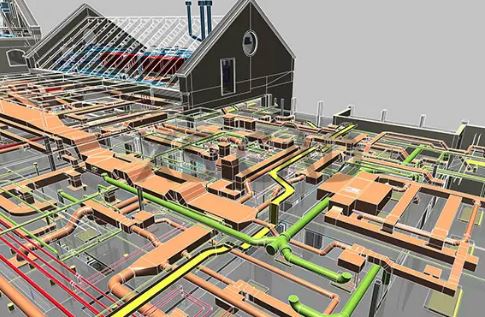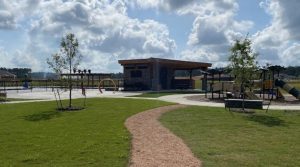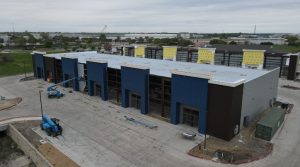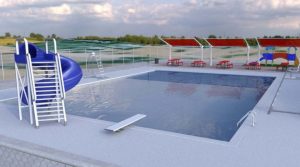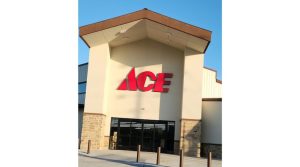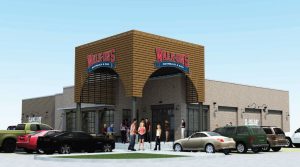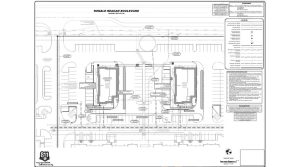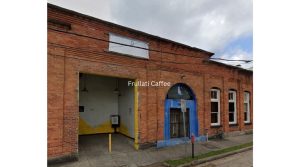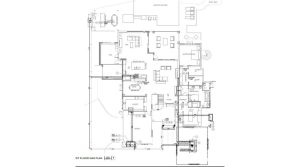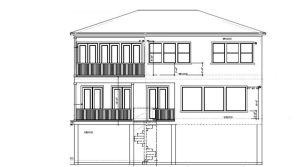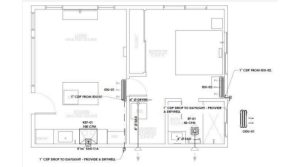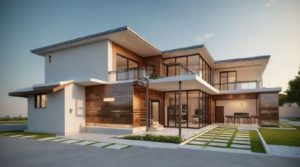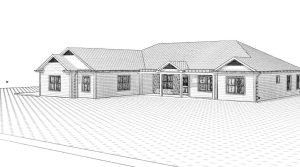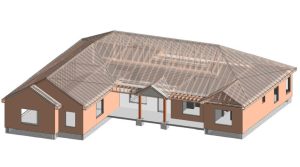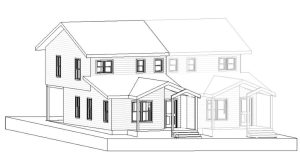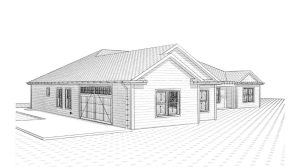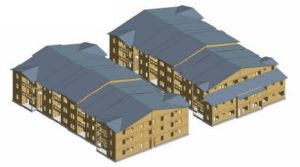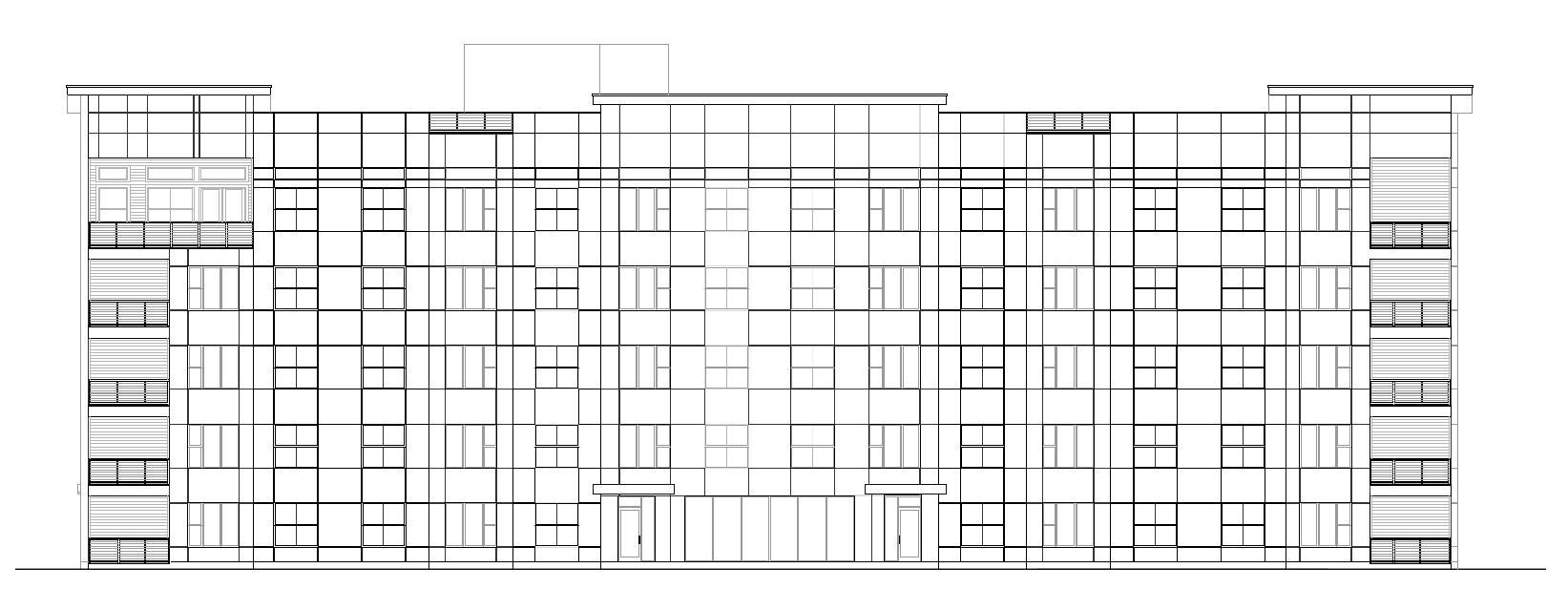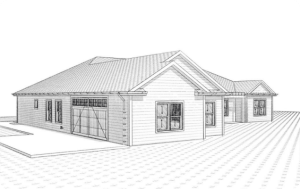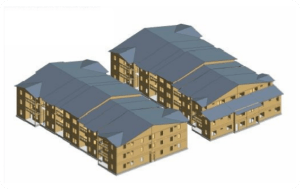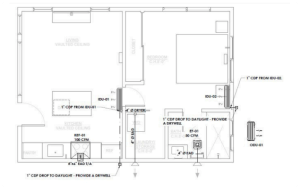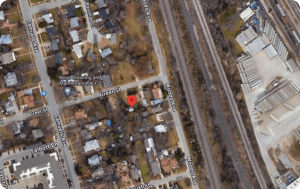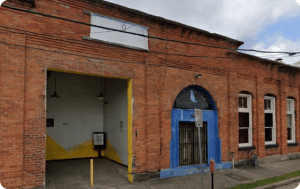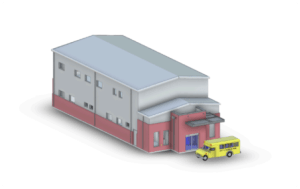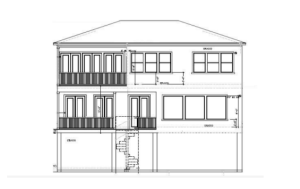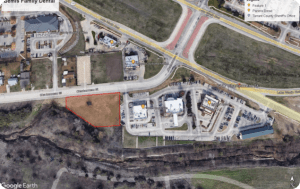The Vital Role of MEP Design in Building Construction: Ensuring Efficiency and Comfort
The successful construction of a building depends on many factors, but perhaps none more important than MEP design. MEP stands for Mechanical, Electrical, and Plumbing, and it refers to the systems that make a building functional and comfortable to work or live in. From heating and cooling to lighting and ventilation, MEP design plays a vital role in ensuring that a building is efficient and comfortable. In this blog post, we’ll explore the importance of MEP design in building construction. We’ll cover the various components of MEP, their functions, and how they work together to make a building livable. We’ll also discuss how MEP design affects a building’s energy efficiency, and how it can help to reduce costs. So, whether you’re a building owner, a contractor, or an engineer, read on to learn more about the vital role of MEP design in building construction.
1. Introduction to MEP Design in Building Construction
Introduction to MEP Design in Building Construction
When it comes to building construction, there is a crucial aspect that often goes unnoticed to the untrained eye but plays a vital role in ensuring the efficiency, functionality, and comfort of the building – MEP design. MEP stands for Mechanical, Electrical, and Plumbing, and it encompasses the systems responsible for heating, ventilation, air conditioning, lighting, electrical distribution, fire protection, and plumbing.
MEP design is an integral part of the building design process, where professionals collaborate to create a comprehensive system that meets the specific needs of the structure and its occupants. The goal is to integrate these essential systems seamlessly into the building, ensuring optimal performance and comfort throughout its lifespan.
Mechanical systems cover heating, ventilation, and air conditioning (HVAC), which play a significant role in maintaining a comfortable and healthy indoor environment. Proper HVAC design takes into account factors such as temperature control, air quality, humidity regulation, and energy efficiency. This ensures that occupants can enjoy a comfortable and productive environment, irrespective of the weather conditions outside.
Electrical systems are responsible for the safe and reliable distribution of electricity throughout the building. They include electrical panels, wiring, lighting, outlets, and other essential components. A well-designed electrical system ensures a steady power supply, adequate lighting levels, and the ability to support the electrical needs of various equipment and appliances within the building.
Plumbing systems encompass the water supply, drainage, and sewage systems. They ensure the availability of clean, potable water for various purposes, such as drinking, sanitation, and firefighting. Proper plumbing design considers factors such as water pressure, water conservation, and efficient waste management to promote water efficiency and reduce environmental impact.
MEP design involves a collaborative effort between architects, engineers, and other professionals who specialize in these respective disciplines. By considering the specific requirements of the building, its location, and the needs of its occupants, they can develop an integrated MEP system that optimizes energy efficiency, reduces operational costs, and enhances the overall functionality of the building.
In conclusion, MEP design plays a vital role in building construction, ensuring efficiency and comfort for occupants. By integrating mechanical, electrical, and plumbing systems seamlessly into the building design, professionals can create an environment that meets the specific needs of the structure and its occupants. This comprehensive approach to MEP design results in buildings that are not only aesthetically pleasing but also functional, sustainable, and comfortable to live or work in.
2. Understanding the Importance of MEP Design in Building Efficiency
MEP design, which stands for Mechanical, Electrical, and Plumbing design, plays a vital role in ensuring efficiency and comfort in building construction. While it may not be as visually prominent as architectural design, MEP design is the backbone that supports the functionality and operation of any building.
One of the key aspects of MEP design is energy efficiency. By carefully designing the mechanical and electrical systems, such as heating, ventilation, air conditioning (HVAC), lighting, and electrical distribution, the energy consumption of a building can be optimized. This not only reduces the environmental impact but also lowers operating costs for building owners and tenants.
Proper HVAC design, for example, ensures that the indoor environment is comfortable and conducive to productivity. The system must be carefully sized and laid out to provide adequate heating, cooling, and ventilation in different areas of the building, taking into account factors such as occupancy, external climate conditions, and thermal insulation.
Effective electrical design is essential for providing a reliable power supply throughout the building. This includes proper distribution of electrical circuits, adequate lighting design, and provision for emergency backup power sources. A well-designed electrical system not only ensures the smooth operation of electrical devices but also enhances safety by minimizing the risk of electrical faults and hazards.
Plumbing design is equally important, as it ensures the availability of clean water supply, efficient drainage systems, and proper sanitation. This involves the design of water distribution networks, waste disposal systems, and plumbing fixtures that meet the needs of the building occupants while adhering to relevant regulations and standards.
Overall, understanding the importance of MEP design in building efficiency is crucial for architects, engineers, and construction professionals. By integrating MEP design from the early stages of the project, potential issues can be identified and addressed, resulting in a more efficient, comfortable, and sustainable building.
3. The Role of Mechanical Systems in Building Construction
In building construction, mechanical systems play a crucial role in ensuring efficiency and comfort for occupants. These systems, commonly referred to as MEP (Mechanical, Electrical, and Plumbing) systems, encompass a wide range of components that work together to create a functional and comfortable environment within the building.
One of the key components of MEP design is the mechanical system, which includes heating, ventilation, and air conditioning (HVAC) systems. These systems are responsible for regulating the indoor temperature, humidity, and air quality, creating a comfortable and healthy environment for occupants. Proper HVAC design not only ensures thermal comfort but also plays a vital role in energy efficiency and sustainability.
The mechanical system also encompasses other important elements such as ductwork, fans, pumps, and controls. Ductwork functions as a network of pathways that distribute conditioned air throughout the building, ensuring proper air circulation and maintaining consistent temperatures in different areas. Fans and pumps are responsible for moving air and fluids within the system, facilitating the distribution of heating or cooling energy. Controls, including thermostats and sensors, enable the automation and regulation of the mechanical system, optimizing its performance and energy consumption.
Efficient mechanical systems not only contribute to occupant comfort but also have a significant impact on the overall energy consumption and operational costs of a building. By integrating energy-efficient technologies, such as variable speed drives and energy recovery systems, MEP designers can minimize energy waste and reduce the environmental footprint of the building.
Furthermore, the proper design and coordination of mechanical systems are essential to ensure seamless integration with other building components, such as electrical and plumbing systems. MEP designers work closely with architects, structural engineers, and other professionals to ensure that all systems are properly coordinated and integrated, avoiding conflicts and optimizing the use of space.
In conclusion, the role of mechanical systems in building construction is vital for achieving efficiency and comfort. Through careful design and coordination, MEP professionals ensure that heating, ventilation, and air conditioning systems work harmoniously to create a comfortable and sustainable indoor environment. By prioritizing energy efficiency and integrating advanced technologies, MEP design plays a crucial role in constructing buildings that are not only functional but also environmentally conscious.
– HVAC (Heating, Ventilation, and Air Conditioning) Systems
HVAC systems play a vital role in the overall MEP (Mechanical, Electrical, and Plumbing) design of a building. These systems are responsible for regulating the indoor environment, ensuring optimum comfort levels for occupants, and maintaining a healthy and productive atmosphere.
Heating, ventilation, and air conditioning are essential components of any building, whether it’s a residential complex, commercial office space, or industrial facility. HVAC systems provide thermal comfort by controlling temperature, humidity, and air quality within the building. They contribute significantly to energy efficiency, occupant well-being, and overall sustainability.
Heating systems are responsible for maintaining a comfortable temperature during colder months. This may involve the installation of boilers, furnaces, or heat pumps, which distribute heat throughout the building via radiators, underfloor heating systems, or air ducts. Proper insulation and efficient heat distribution are key factors in ensuring energy efficiency and cost-effectiveness.
Ventilation systems are crucial for maintaining a healthy indoor environment. They ensure the circulation of fresh air, removing pollutants, odors, and moisture from the building. Ventilation can be achieved through natural means, such as windows and vents, or through mechanical systems, such as fans and air handling units. Proper ventilation not only improves air quality but also prevents the buildup of harmful contaminants, ensuring the well-being of occupants.
Air conditioning systems are responsible for cooling the indoor environment, particularly during hot and humid weather. They remove heat from the building, providing a comfortable temperature for occupants. Air conditioning can be achieved through central systems, such as chillers and cooling towers, or individual units like split air conditioners. Energy-efficient designs, such as variable refrigerant flow (VRF) systems and smart controls, help optimize cooling and reduce energy consumption.
In addition to providing comfort, HVAC systems also contribute to the overall energy performance of a building. Well-designed systems can help reduce energy consumption, lower utility costs, and minimize environmental impact. MEP design professionals work closely with architects, engineers, and contractors to ensure that HVAC systems are integrated seamlessly into the building design, considering factors such as load calculations, space limitations, and sustainability goals.
In conclusion, HVAC systems are an indispensable part of MEP design in building construction. They play a crucial role in ensuring efficient energy usage, occupant comfort, and indoor air quality. By incorporating advanced technologies and sustainable practices, MEP professionals can create HVAC systems that not only meet the functional requirements of a building but also contribute to its long-term sustainability and operational efficiency.
– Plumbing and Water Supply Systems
Plumbing and water supply systems play a vital role in MEP (Mechanical, Electrical, and Plumbing) design for building construction. These systems are crucial for ensuring efficient water distribution, sanitation, and overall comfort within a building.
When it comes to plumbing design, meticulous planning is essential. The layout of pipes, fixtures, and drainage systems needs to be carefully considered to ensure optimal functionality and efficiency. This involves determining the most suitable routing of pipes, selecting appropriate pipe materials, and sizing the system to meet the building’s water demands.
Efficient water supply systems not only ensure an uninterrupted flow of clean water but also help conserve water. Plumbing design professionals incorporate measures such as low-flow fixtures, water-efficient appliances, and rainwater harvesting systems to minimize water wastage and promote sustainability.
In addition to water supply, plumbing systems also encompass sanitary systems that manage waste disposal and ensure proper hygiene. Sewage and drainage systems should be designed to effectively remove and transport waste to treatment facilities, preventing any potential health hazards.
Moreover, plumbing design takes into account the specific needs of different types of buildings. Whether it’s a residential complex, commercial establishment, or industrial facility, the plumbing system design must align with the building’s purpose and occupancy requirements.
An efficiently designed plumbing and water supply system contributes significantly to the overall comfort of the building’s occupants. Adequate water pressure, temperature control, and reliable drainage systems are crucial for a satisfactory user experience. MEP design professionals work closely with architects, engineers, and contractors to integrate these systems seamlessly into the building’s design, ensuring functionality, efficiency, and occupant satisfaction.
In conclusion, plumbing and water supply systems play a crucial role in MEP design for building construction. By ensuring efficient water distribution, sanitation, and comfort, these systems contribute to the overall functionality and sustainability of a building. Meticulous planning, incorporating water-saving measures, and considering the specific needs of the building are key elements in the successful implementation of plumbing design.
– Fire Protection Systems
Fire protection systems are a crucial component of MEP (Mechanical, Electrical, and Plumbing) design in building construction. These systems play a vital role in ensuring the safety and well-being of occupants, as well as protecting the structure itself from fire-related risks.
The primary objective of fire protection systems is to detect, control, and extinguish fires in a timely manner, preventing the spread of flames and minimizing potential damage. These systems encompass a range of elements, including fire suppression systems, fire alarm systems, smoke control systems, and emergency evacuation systems.
One of the key aspects of MEP design is the integration of fire protection systems seamlessly into the overall building infrastructure. This involves thorough planning, careful selection of appropriate equipment, and adherence to local building codes and regulations. The design team must consider factors such as building occupancy, size, layout, and specific fire hazards that may be present.
Fire suppression systems, such as sprinkler systems, are commonly used to control or extinguish fires. These systems are strategically installed throughout the building, with sprinkler heads designed to activate when exposed to heat, releasing water to suppress the fire. The design team must determine the optimal placement and coverage of sprinkler heads to ensure maximum effectiveness.
Fire alarm systems are another critical component of fire protection. These systems consist of detectors, control panels, and audible or visual alarms. The detectors sense the presence of smoke, heat, or flames and trigger the alarm system to alert occupants and prompt evacuation procedures. The design team must carefully plan for adequate coverage and ensure proper integration with other building systems.
Smoke control systems are designed to manage the movement of smoke during a fire, preventing its spread to other areas of the building. These systems employ various techniques, such as pressurization, exhaust ventilation, or smoke barriers, depending on the building’s design and requirements. The MEP design team must evaluate the building’s layout and develop a comprehensive smoke control strategy to safeguard occupants and facilitate safe evacuation.
Emergency evacuation systems, including emergency lighting and exit signage, are essential for guiding occupants to safety during a fire emergency. These systems ensure that escape routes are clearly illuminated and marked, minimizing confusion and facilitating a swift and orderly evacuation process. The design team must meticulously plan for the placement and visibility of emergency lighting and exit signage throughout the building.
In conclusion, fire protection systems are a critical aspect of MEP design in building construction. They are designed to safeguard occupants and property from the devastating effects of fire incidents. By carefully integrating these systems into the overall building infrastructure, the design team can ensure efficiency, comfort, and, above all, safety for the building’s occupants.
4. The Significance of Electrical Systems in Building Construction
When it comes to building construction, one of the most significant aspects that cannot be overlooked is the electrical system. The smooth functioning of any building heavily relies on a well-designed electrical infrastructure. From powering essential equipment and appliances to providing adequate lighting, the electrical system plays a vital role in ensuring efficiency and comfort within the building.
First and foremost, a well-planned electrical system ensures the safe distribution of power throughout the building. This includes the installation of appropriate wiring, switches, and circuit breakers to prevent any electrical hazards or accidents. It is crucial to adhere to local electrical codes and regulations to guarantee the safety of the occupants.
Furthermore, an efficient electrical system facilitates the seamless operation of various electrical devices and equipment within the building. Whether it’s lighting fixtures, heating and cooling systems, elevators, or security systems, all these components heavily rely on a properly functioning electrical infrastructure. A well-designed electrical system ensures that these systems operate optimally, minimizing downtime and maximizing productivity.
Moreover, the electrical system also plays a significant role in energy management within the building. With the increasing emphasis on sustainability and energy efficiency, MEP design professionals consider energy-saving measures when designing the electrical system. This includes incorporating energy-efficient lighting fixtures, utilizing smart control systems, and implementing renewable energy sources such as solar panels. By optimizing energy usage, building owners can reduce their carbon footprint and lower energy costs in the long run.
In addition to functionality and efficiency, the electrical system also contributes to the overall comfort of the building occupants. Adequate lighting levels, well-distributed power outlets, and properly designed HVAC control systems all contribute to creating a comfortable environment. Whether it’s a residential building, commercial office space, or a healthcare facility, a well-designed electrical system ensures that occupants can carry out their activities without any disruptions or discomfort.
In conclusion, the significance of electrical systems in building construction cannot be overstated. From ensuring safety to facilitating efficient operations and providing comfort, a well-planned electrical infrastructure is crucial for the overall success of any construction project. By engaging experienced MEP design professionals, building owners can ensure that their electrical systems are designed to meet the specific needs of the building, ultimately resulting in enhanced efficiency, comfort, and overall satisfaction.
– Power Distribution Systems
Power distribution systems play a vital role in ensuring efficiency and comfort in building construction. MEP (Mechanical, Electrical, and Plumbing) design encompasses all aspects of electrical systems, including power distribution, to ensure seamless functionality and optimal performance.
In modern buildings, power distribution systems are responsible for supplying electricity to every corner of the structure, from lighting fixtures and electrical outlets to heating, ventilation, and air conditioning (HVAC) systems. These systems are designed to distribute power safely and efficiently, taking into account the specific needs and demands of the building.
The design process begins with a thorough assessment of the building’s electrical requirements. Factors such as the size and layout of the structure, the number of occupants, the types of equipment and appliances used, and any specific electrical needs must be considered. This information is then used to determine the optimal layout and capacity of the power distribution system.
Efficiency is a key consideration in MEP design, especially when it comes to power distribution. By carefully planning the layout of electrical panels, transformers, and distribution boards, engineers can minimize energy loss and ensure that power is distributed effectively. This not only reduces electricity waste but also helps to lower operational costs for the building owner.
Safety is another crucial aspect of power distribution systems. Proper grounding and protection measures are implemented to prevent electrical hazards and ensure the well-being of occupants. Circuit breakers, surge protection devices, and other safety mechanisms are incorporated into the design to safeguard against potential electrical faults or overloads.
Comfort is also directly linked to the efficiency of power distribution systems. Adequate lighting, temperature control, and the smooth operation of electrical equipment contribute to a pleasant and productive environment for building occupants. By ensuring a reliable and efficient power supply, MEP design plays a crucial role in creating a comfortable and functional space.
In conclusion, power distribution systems are an integral part of MEP design in building construction. They provide the necessary electrical infrastructure to support various systems and equipment, ensuring efficiency, safety, and comfort. By incorporating thoughtful and well-engineered power distribution solutions, construction professionals can contribute to the overall success of a building project.
– Lighting Systems
Lighting systems play a crucial role in MEP (Mechanical, Electrical, and Plumbing) design for building construction. Not only do they provide illumination, but they also contribute to the overall efficiency and comfort of the space.
Proper lighting design goes beyond simply installing light fixtures. It involves careful calculation and consideration of various factors such as the type of space, its purpose, and the desired ambiance. A well-designed lighting system can enhance productivity, create a welcoming atmosphere, and even impact the well-being of occupants.
In terms of efficiency, MEP designers strive to optimize energy consumption by utilizing energy-efficient lighting technologies, such as LED (Light-Emitting Diode) lights. LED lights offer significant energy savings compared to traditional incandescent or fluorescent lights. They also have a longer lifespan, reducing maintenance and replacement costs. By selecting the right fixtures and implementing smart lighting controls, energy usage can be further optimized, allowing for greater sustainability and cost savings over time.
Comfort is another important aspect of lighting design. MEP designers take into account the distribution and intensity of light to ensure uniform illumination throughout the space. This helps reduce eye strain, shadows, and glare, creating a visually comfortable environment for occupants. Proper lighting design can also contribute to the overall aesthetic appeal of the building, enhancing its architectural features and creating a pleasant ambiance.
Additionally, lighting systems are integrated with other MEP elements, such as HVAC (Heating, Ventilation, and Air Conditioning) systems, to create a cohesive and efficient building infrastructure. For example, occupancy sensors can be incorporated into the lighting system to automatically adjust light levels based on occupancy, reducing unnecessary energy consumption. This integration not only improves energy efficiency but also enhances the overall functionality and performance of the building.
In conclusion, lighting systems play a vital role in MEP design for building construction. They not only provide illumination but also contribute to energy efficiency, occupant comfort, and the overall aesthetic appeal of the space. By incorporating efficient lighting technologies and thoughtful design strategies, MEP designers strive to create environments that are both efficient and comfortable for occupants, ensuring a successful and sustainable building project.
– Communication and Data Systems
Communication and data systems play a crucial role in modern building construction, and MEP design is at the forefront of ensuring their seamless integration. In today’s interconnected world, where technology is continuously advancing, buildings need to be equipped with robust communication networks and efficient data systems to meet the ever-growing demands of occupants.
One of the key aspects of MEP design in this domain is the establishment of reliable networking infrastructure. This includes the installation of structured cabling systems, which serve as the backbone for various communication services such as internet connectivity, telephony, video conferencing, and data transfer. These systems are meticulously planned and implemented to provide high-speed and uninterrupted communication throughout the building.
Moreover, MEP design takes into account the specific requirements of different areas within the building. For instance, in office spaces, the design may focus on providing ample network ports and Wi-Fi coverage to support a large number of devices. In healthcare facilities, specialized communication systems may be implemented to ensure efficient patient monitoring and communication between medical staff.
In addition to communication systems, MEP design also encompasses the integration of data systems within the building. This involves the careful planning and installation of data centers, server rooms, and other equipment necessary for data storage, processing, and management. These systems are designed to meet the specific needs of the building, such as scalability, security, and energy efficiency.
Efficient MEP design ensures that communication and data systems are seamlessly integrated into the building’s infrastructure, allowing for smooth operations and enhanced occupant experience. It enables occupants to stay connected, collaborate effectively, and access information effortlessly, contributing to increased productivity and overall satisfaction.
Furthermore, effective communication and data systems can also facilitate the implementation of smart building technologies. These technologies leverage data and connectivity to optimize various building functions, such as lighting, HVAC systems, and security. With the right MEP design, buildings can embrace the benefits of automation and intelligent control, leading to improved energy efficiency, cost savings, and enhanced occupant comfort.
In conclusion, communication and data systems are vital components of modern building construction, and MEP design plays a crucial role in ensuring their efficient integration. By carefully considering the specific needs and requirements of the building, MEP designers can create optimized solutions that enable seamless communication, efficient data management, and the implementation of smart building technologies. These systems not only enhance the efficiency of building operations but also contribute to the comfort and satisfaction of its occupants.
5. The Integration of MEP Systems for Optimal Efficiency
When it comes to building construction, the integration of MEP (Mechanical, Electrical, and Plumbing) systems plays a vital role in ensuring optimal efficiency and comfort for occupants. MEP systems encompass a wide range of components, including heating, ventilation, air conditioning, electrical distribution, lighting, plumbing, and fire protection.
The integration of these systems is crucial as it allows for seamless coordination and communication between various components, resulting in an overall efficient and functional building. By carefully designing and integrating MEP systems, engineers and designers can optimize energy consumption, reduce operational costs, and enhance the comfort and well-being of occupants.
Efficient integration starts with detailed planning and collaboration among professionals involved in the construction process. MEP designers work closely with architects, structural engineers, and contractors to develop a comprehensive plan that considers the unique requirements and constraints of the building project. This collaborative approach ensures that the MEP systems are seamlessly integrated into the overall design and construction process.
One key aspect of MEP integration is the proper sizing and placement of equipment and distribution systems. Effective space planning and coordination are essential to optimize the functionality and efficiency of MEP systems. For example, locating HVAC units strategically to minimize ductwork lengths or placing electrical panels in accessible locations can significantly enhance system performance and maintenance.
Moreover, the integration of smart building technologies and automation systems further enhances the efficiency and control of MEP systems. These advanced systems allow for real-time monitoring, remote control, and centralized management of various components, enabling proactive maintenance, energy optimization, and rapid response to any issues.
By integrating MEP systems effectively, buildings can achieve sustainable and energy-efficient operation, reducing their environmental footprint and operating costs. Additionally, occupants benefit from enhanced indoor air quality, thermal comfort, and overall well-being.
In conclusion, the integration of MEP systems is a crucial aspect of building construction. It ensures optimal efficiency, comfort, and sustainability by coordinating mechanical, electrical, and plumbing components. By employing meticulous planning, collaboration, and the use of advanced technologies, MEP designers and engineers can create buildings that are efficient, comfortable, and environmentally friendly.
6. Ensuring Comfort and Indoor Environmental Quality through MEP Design
MEP design plays a vital role not only in ensuring the efficiency of a building but also in providing comfort and maintaining indoor environmental quality. The comfort of occupants is of utmost importance when designing a building, and MEP systems play a crucial role in achieving this.
One of the key aspects of MEP design when it comes to ensuring comfort is the HVAC (Heating, Ventilation, and Air Conditioning) system. Proper ventilation and temperature control are essential for creating a comfortable indoor environment. The HVAC system is responsible for supplying fresh air, removing pollutants, and maintaining a suitable temperature within the building. This helps to prevent stuffiness, odors, and excessive heat or cold, providing occupants with a pleasant and comfortable environment.
In addition to temperature control, proper lighting and acoustics are also important factors in ensuring indoor comfort. MEP design considers the placement and selection of lighting fixtures to provide optimal lighting levels and minimize glare. Similarly, acoustics play a significant role in creating a comfortable environment by managing noise levels and minimizing sound transmission between different areas of the building.
Moreover, MEP design takes into account the importance of indoor air quality. The selection and installation of appropriate air filtration systems, as well as the consideration of proper ventilation rates, are crucial in maintaining a healthy indoor environment. This becomes particularly important in buildings where air pollutants or contaminants may be present, such as in healthcare facilities or industrial settings.
By incorporating these elements into the MEP design, building owners can ensure that occupants enjoy a comfortable and healthy indoor environment. This not only enhances their overall experience but also contributes to increased productivity, satisfaction, and well-being. Therefore, MEP design plays a vital role in not just the functionality and efficiency of a building, but also in creating a space that prioritizes comfort and indoor environmental quality.
– Temperature Control and Comfort
Temperature control and comfort are crucial aspects of MEP (mechanical, electrical, and plumbing) design in building construction. Whether it’s a residential, commercial, or industrial structure, maintaining a comfortable indoor environment is essential for the well-being and productivity of occupants.
One of the primary considerations in MEP design is the heating, ventilation, and air conditioning (HVAC) system. This system ensures that the indoor temperature is regulated according to the desired comfort level. During the design phase, various factors such as building orientation, insulation, and occupancy are taken into account to determine the HVAC system’s capacity and efficiency.
Efficient temperature control not only ensures occupant comfort but also plays a significant role in energy conservation. By implementing intelligent HVAC control systems, MEP designers can optimize energy usage, reduce carbon footprint, and minimize operating costs. These systems can incorporate features such as programmable thermostats, occupancy sensors, and zone control to effectively manage temperature settings based on occupancy and usage patterns.
Moreover, MEP design encompasses the distribution of conditioned air throughout the building. Proper air distribution ensures that every area receives adequate airflow, avoiding temperature inconsistencies or stagnant air pockets. This is achieved through a network of ductwork systems designed to deliver conditioned air to different zones or rooms efficiently and quietly.
In addition to temperature control, MEP design also addresses the provision of thermal comfort. This involves considering factors such as radiant heat transfer, humidity levels, and ventilation rates. Adequate insulation, vapor barriers, and moisture control measures are incorporated to prevent heat loss or gain, maintain appropriate humidity levels, and minimize the risk of condensation or mold growth.
Overall, MEP design plays a vital role in achieving optimal temperature control and comfort in building construction. By integrating efficient HVAC systems, intelligent control mechanisms, and thoughtful air distribution strategies, MEP designers ensure that occupants experience a pleasant and productive indoor environment while maximizing energy efficiency and sustainability.
– Indoor Air Quality and Ventilation
Indoor air quality and ventilation play a vital role in creating a comfortable and healthy environment for building occupants. MEP design, which stands for Mechanical, Electrical, and Plumbing design, plays a significant role in ensuring efficient ventilation systems that promote good indoor air quality.
Proper ventilation systems help in removing pollutants, odors, and excess moisture from indoor spaces. This is crucial to maintain a healthy and comfortable environment, particularly in commercial buildings, offices, and residential complexes where occupants spend a significant amount of time. Inadequate ventilation can lead to a buildup of contaminants, leading to poor indoor air quality, which can have adverse effects on occupants’ health and well-being.
MEP designers carefully consider factors such as the building’s occupancy, size, and intended use to determine the appropriate ventilation requirements. They design systems that efficiently exchange indoor and outdoor air, ensuring a constant supply of fresh air while effectively removing stale air and pollutants.
One common method used in MEP design for ventilation is mechanical ventilation systems. These systems use fans, ducts, and filters to circulate and filter the air within a building. They can be designed to incorporate heat recovery systems, which capture and reuse the thermal energy from the expelled air to minimize energy wastage.
Another crucial aspect of indoor air quality is the control of humidity levels. Excessive moisture in the air can promote the growth of mold and mildew, leading to potential health issues and damage to the building’s structure. MEP designers incorporate proper humidity control measures, such as dehumidification systems, to maintain optimal moisture levels within the building.
In addition to promoting health and well-being, efficient ventilation systems also contribute to energy efficiency. MEP designers strive to strike a balance between providing adequate ventilation and minimizing energy consumption. They employ strategies like variable air volume systems, demand-controlled ventilation, and energy-efficient equipment to optimize the performance of ventilation systems while reducing energy usage and associated costs.
In conclusion, indoor air quality and ventilation are crucial considerations in building construction, and MEP design plays a vital role in ensuring efficient and effective systems. By incorporating proper ventilation techniques and controls, MEP designers contribute to creating comfortable, healthy, and energy-efficient indoor environments for building occupants.
– Acoustic Design
Acoustic design plays a vital role in creating a comfortable and functional environment within a building. In today’s bustling world, noise pollution has become a significant concern for both residential and commercial spaces. Therefore, incorporating an effective acoustic design is essential to ensure a peaceful and productive atmosphere.
When it comes to MEP (Mechanical, Electrical, and Plumbing) design in building construction, acoustic considerations are often overlooked. However, neglecting this aspect can lead to numerous issues such as poor speech intelligibility, reduced privacy, and overall discomfort for the occupants.
One key aspect of acoustic design is sound insulation. This involves incorporating materials and construction techniques that minimize the transmission of sound between different areas of the building. For instance, in an office building, sound insulation between meeting rooms and open workspaces is crucial to maintain confidentiality and productivity.
Another important consideration is sound absorption. This involves using appropriate materials and finishes that absorb sound waves rather than allowing them to bounce off hard surfaces, causing reverberation. By strategically placing acoustic panels, ceiling tiles, and wall coverings, the level of background noise can be significantly reduced, creating a more comfortable and peaceful environment.
Furthermore, MEP design should also account for the control of unwanted noise sources such as HVAC systems, electrical equipment, and plumbing fixtures. Proper selection and installation of noise-reducing components, such as silencers, vibration isolators, and soundproof enclosures, can help minimize the impact of these sources on the overall acoustic environment.
In summary, acoustic design should never be overlooked in building construction. By incorporating sound insulation, absorption, and control measures into MEP design, a building can provide its occupants with a quiet and comfortable space, free from the disturbances of external noise. This not only enhances productivity and well-being but also contributes to the overall success of the project.
7. The Impact of Energy Efficiency and Sustainability on MEP Design
When it comes to MEP (Mechanical, Electrical, and Plumbing) design in building construction, energy efficiency and sustainability play a crucial role. In today’s world, where environmental concerns are at the forefront, incorporating energy-efficient and sustainable practices into MEP design is not just a trend but a necessity.
Energy efficiency focuses on reducing the energy consumption of a building while maintaining optimal performance. MEP systems, such as HVAC (Heating, Ventilation, and Air Conditioning), lighting, and electrical systems, can account for a significant portion of a building’s energy usage. By implementing energy-efficient technologies and strategies in MEP design, such as using high-efficiency equipment, optimizing insulation, and integrating smart controls, buildings can minimize their energy consumption and lower operational costs.
Sustainability, on the other hand, emphasizes the use of renewable resources, minimizing waste generation, and reducing the overall environmental impact of a building. MEP design can contribute to sustainability goals by incorporating systems that utilize renewable energy sources, such as solar panels or geothermal heat pumps. Additionally, water-saving fixtures, rainwater harvesting systems, and efficient plumbing designs can help conserve water, a precious resource.
The impact of energy efficiency and sustainability on MEP design goes beyond just reducing environmental impact. It also has tangible benefits for building owners and occupants. Energy-efficient buildings have lower utility bills and operational expenses, resulting in long-term cost savings. Moreover, buildings designed with a focus on sustainability provide a healthier and more comfortable indoor environment for occupants. Proper ventilation, lighting design that promotes natural daylight, and efficient thermal comfort systems contribute to improved occupant satisfaction and productivity.
In conclusion, energy efficiency and sustainability are integral considerations in MEP design for building construction. By incorporating these principles into the design process, buildings can achieve optimal performance, lower operational costs, and create a healthier and more sustainable environment for all. The role of MEP design in promoting efficiency and comfort cannot be underestimated in the quest for environmentally conscious and sustainable construction practices.
– Energy-efficient Lighting and HVAC Systems
Energy-efficient lighting and HVAC systems are critical components of MEP (Mechanical, Electrical, and Plumbing) design in building construction. These systems play a vital role in ensuring both efficiency and comfort for occupants.
When it comes to lighting, the focus is on utilizing energy-efficient fixtures and technologies that reduce power consumption without compromising the quality and effectiveness of illumination. LED lighting, for instance, has gained immense popularity due to its longer lifespan, lower energy consumption, and reduced maintenance costs compared to traditional lighting options such as incandescent or fluorescent bulbs.
In addition to energy efficiency, the design of lighting systems should also prioritize occupant comfort and well-being. Natural daylighting strategies can be integrated into the design to maximize the use of natural light, reducing the reliance on artificial lighting during daylight hours. This not only enhances energy efficiency but also creates a more pleasant and productive indoor environment.
HVAC systems are another crucial aspect of MEP design that contribute to energy efficiency and occupant comfort. Heating, ventilation, and air conditioning systems are responsible for regulating indoor temperature, humidity, and air quality.
Energy-efficient HVAC systems utilize advanced technologies such as variable speed drives, energy recovery systems, and smart controls. These technologies optimize energy consumption and reduce operational costs, while also providing precise control over temperature and ventilation.
Proper HVAC system design considers factors such as building orientation, insulation, and thermal zoning to ensure efficient heating and cooling distribution throughout the building. By providing occupants with a comfortable environment, these systems contribute to increased productivity, improved health, and overall satisfaction.
Furthermore, the integration of building automation systems (BAS) can enhance the performance and efficiency of both lighting and HVAC systems. BAS allows for centralized control and monitoring of various building systems, enabling real-time adjustments and optimization based on occupancy patterns and environmental conditions.
In conclusion, energy-efficient lighting and HVAC systems are integral parts of MEP design in building construction. By prioritizing efficiency and occupant comfort, these systems contribute to sustainable and comfortable indoor environments while reducing energy consumption and operational costs. Incorporating the latest technologies and design strategies in MEP ensures that buildings are not only functional but also environmentally responsible.
– Renewable Energy Integration
Renewable energy integration plays a vital role in MEP (Mechanical, Electrical, and Plumbing) design for building construction. As the world increasingly focuses on sustainability and reducing carbon footprints, incorporating renewable energy sources into building systems has become more important than ever. MEP design professionals are tasked with finding innovative ways to integrate renewable energy technologies seamlessly into the overall building design, ensuring both efficiency and comfort for occupants.
One of the most common forms of renewable energy integration in building construction is the incorporation of solar photovoltaic (PV) systems. These systems harness sunlight and convert it into electricity, helping to power various electrical systems within the building. By strategically placing solar panels on rooftops or other suitable areas, buildings can generate their own clean energy and reduce reliance on traditional energy sources.
Another form of renewable energy integration is the use of geothermal heat pumps. These systems utilize the constant temperature of the earth to provide heating, cooling, and hot water for buildings. By tapping into the earth’s natural heat, geothermal systems can significantly reduce energy consumption and lower utility costs while maintaining optimal indoor comfort.
Wind turbines are also being integrated into building designs, especially for high-rise structures and large open spaces. The power generated by wind turbines can be used to supplement the building’s electricity needs, further reducing reliance on conventional power grids. Careful consideration must be given to the location and design of wind turbines to ensure maximum efficiency and minimal noise disturbances.
In addition to these renewable energy sources, MEP design professionals also explore innovative technologies such as biomass energy, hydroelectric power, and even kinetic energy recovery systems. Each building project presents unique opportunities and challenges, and it is the responsibility of MEP designers to evaluate which renewable energy solutions are most suitable for achieving the project’s goals.
By integrating renewable energy sources into MEP design, buildings can contribute to a greener future while enjoying the benefits of reduced energy costs and improved sustainability. However, it is crucial to approach renewable energy integration with careful planning and expertise to ensure optimal performance, system compatibility, and long-term benefits. With the right MEP design strategies, buildings can become efficient, comfortable spaces that prioritize environmental responsibility and promote a sustainable future.
– Water Conservation Strategies
Water conservation strategies play a vital role in MEP (Mechanical, Electrical, and Plumbing) design for building construction. With increasing concerns about water scarcity and environmental sustainability, it has become crucial for designers and builders to incorporate efficient water usage systems into their projects.
One of the key aspects of water conservation in MEP design is the implementation of water-efficient fixtures and appliances. This includes low-flow toilets, faucets, and showerheads that minimize water consumption without compromising on performance. By choosing these fixtures, buildings can significantly reduce their water usage, leading to substantial savings in both water bills and overall consumption.
Another important strategy is the implementation of rainwater harvesting systems. By collecting rainwater from rooftops and other surfaces, it can be stored and used for non-potable purposes such as irrigation, toilet flushing, and cooling tower makeup. This not only reduces the demand for freshwater but also helps to mitigate stormwater runoff and its associated environmental impacts.
In addition to these measures, MEP design also focuses on efficient water distribution systems. This involves designing plumbing layouts that minimize pipe lengths, reduce pressure losses, and optimize flow rates. By minimizing the distance between fixtures and using properly sized pipes, water wastage can be minimized, ensuring that water reaches its intended destination efficiently.
Furthermore, the integration of smart water management systems is becoming increasingly popular in MEP design. These systems utilize sensors and automated controls to monitor and regulate water usage in real-time. For example, smart irrigation systems can adjust watering schedules based on weather conditions and soil moisture levels, preventing overwatering and minimizing water waste.
Overall, water conservation strategies are an essential component of MEP design in building construction. By incorporating water-efficient fixtures, rainwater harvesting systems, optimized plumbing layouts, and smart water management technologies, MEP designers and builders can ensure that buildings are not only efficient but also contribute towards sustainable water usage.
8. The Role of MEP Design in Complying with Building Codes and Standards
In the world of building construction, compliance with building codes and standards is of utmost importance. These codes and standards are put in place to ensure the safety, efficiency, and comfort of the occupants. And when it comes to adhering to these regulations, MEP (Mechanical, Electrical, and Plumbing) design plays a vital role.
MEP design encompasses the systems that are essential for a building’s functionality and comfort. This includes heating, ventilation, and air conditioning (HVAC) systems, electrical systems, plumbing systems, fire protection systems, and more. Each of these systems must meet specific codes and standards to ensure they are designed and installed correctly.
One of the main reasons why MEP design is crucial for compliance is that it addresses the technical aspects of these systems. MEP designers have a deep understanding of the building codes and standards related to each component of the MEP systems. They carefully consider factors such as load calculations, equipment sizing, distribution systems, and energy efficiency requirements.
By incorporating MEP design into the building construction process, developers and architects can ensure that the building meets all the necessary codes and standards. This not only helps in obtaining the required permits and approvals but also guarantees the safety and well-being of the occupants.
Furthermore, a well-designed MEP system can contribute to the overall efficiency of the building. Energy-efficient HVAC systems, for example, can reduce energy consumption and lower operating costs. Properly designed electrical systems can maximize power distribution and minimize the risk of electrical failures. Plumbing systems designed with water conservation in mind can help in reducing water usage.
In summary, MEP design plays a crucial role in complying with building codes and standards. It ensures that the building meets all the necessary requirements for safety, efficiency, and comfort. By engaging experienced MEP designers and incorporating their expertise into the construction process, developers can achieve a compliant and high-performing building that meets the needs of its occupants.
– Safety Regulations and Fire Protection
When it comes to building construction, safety regulations and fire protection are paramount considerations. MEP (Mechanical, Electrical, and Plumbing) design plays a vital role in ensuring the safety and well-being of occupants within a building.
One of the key aspects of MEP design is the integration of fire protection systems. These systems are designed to detect and suppress fires, allowing for prompt evacuation and minimizing potential damage. Fire safety measures include the installation of fire alarms, sprinkler systems, fire extinguishers, and emergency lighting.
Fire alarm systems are essential in detecting the presence of smoke or fire and alerting occupants immediately. They are designed to be highly sensitive and can detect even the smallest traces of smoke, triggering audible and visual alarms. This early warning system ensures that occupants have ample time to evacuate the building safely.
Sprinkler systems are another critical component of fire protection. These systems are designed to automatically release water when triggered by heat or smoke, effectively suppressing the fire and preventing its spread. They play a crucial role in controlling and extinguishing fires until the arrival of the fire department.
In addition to fire alarms and sprinkler systems, the placement of fire extinguishers throughout the building is essential. These portable devices allow occupants to quickly respond to small fires, potentially preventing them from escalating into larger, more dangerous situations. Adequate signage should also be in place to ensure that fire extinguishers are easily accessible and clearly visible.
Emergency lighting is another crucial element of MEP design for fire protection. In the event of a power outage during a fire, emergency lighting provides illumination to guide occupants towards exits and evacuation routes. This ensures that people can navigate through the building safely, even in low visibility conditions.
Overall, safety regulations and fire protection are integral components of MEP design in building construction. By implementing effective fire safety measures and complying with the necessary regulations, MEP engineers and designers play a crucial role in creating buildings that prioritize the safety, well-being, and comfort of their occupants.
– Accessibility and Universal Design
Accessibility and universal design play a vital role in ensuring that buildings are inclusive and accommodating for all individuals. MEP design, which stands for mechanical, electrical, and plumbing design, has a significant impact on creating an accessible environment.
When it comes to accessibility, MEP design considers various factors to provide equal opportunities for people with disabilities or mobility limitations. This includes designing ramps, elevators, and lifts for easy access to different floors, as well as properly sized doorways and corridors to accommodate wheelchairs and assistive devices.
Universal design principles are also incorporated into the MEP design process to enhance the overall functionality and usability of a building. By implementing features such as adjustable lighting levels, user-friendly control systems, and intuitive signage, buildings become more user-friendly for individuals of all ages, abilities, and backgrounds.
Moreover, MEP design ensures the availability of essential amenities to promote comfort and convenience. This includes properly designed HVAC systems that regulate indoor temperature and ventilation to create a comfortable environment for occupants. Adequate lighting is strategically placed to provide sufficient illumination while considering energy efficiency measures.
Additionally, plumbing design plays a crucial role in creating accessible spaces. It involves the installation of accessible toilets, handrails, and sinks at appropriate heights to cater to the needs of individuals with disabilities. MEP design also incorporates efficient water management systems, such as low-flow fixtures and water-saving technologies, to promote sustainability and reduce water usage.
In conclusion, accessibility and universal design are integral components of MEP design in building construction. By considering the diverse needs of individuals and implementing inclusive features, MEP designers contribute to the creation of efficient, comfortable, and inclusive spaces that can be enjoyed by everyone.
– Environmental and Sustainability Standards
Environmental and sustainability standards play a crucial role in MEP (mechanical, electrical, and plumbing) design for building construction. With growing concerns about climate change and the need for sustainable development, it is imperative that MEP systems are designed to minimize their environmental impact and maximize energy efficiency.
One of the key aspects of environmental standards in MEP design is reducing energy consumption. This can be achieved through various means such as optimizing the design of HVAC (heating, ventilation, and air conditioning) systems, incorporating energy-efficient lighting solutions, and implementing smart controls and automation technologies. By carefully selecting equipment and systems with high energy efficiency ratings, building owners can significantly reduce their energy consumption and carbon footprint.
Moreover, sustainability standards also emphasize the use of renewable energy sources. Incorporating solar panels or wind turbines into the building’s design can help generate clean and renewable energy, reducing the reliance on fossil fuels. These sustainable energy sources can power various building systems, including lighting, heating, and even charging electric vehicles.
In addition to energy efficiency and renewable energy, MEP design also focuses on optimizing water usage. Water-efficient plumbing fixtures, such as low-flow toilets and faucets, can significantly reduce water consumption without compromising user comfort. Additionally, implementing rainwater harvesting systems can provide a sustainable source of water for non-potable uses like irrigation or toilet flushing.
Furthermore, environmental and sustainability standards also address indoor environmental quality. MEP systems must ensure proper ventilation and air quality to create a healthy and comfortable indoor environment. This involves the optimal design and installation of ventilation systems, air filtration, and control of indoor pollutants, ensuring that occupants can enjoy fresh air and maintain their well-being.
In conclusion, environmental and sustainability standards are integral to MEP design in building construction. By incorporating energy-efficient technologies, renewable energy sources, water conservation measures, and promoting indoor environmental quality, MEP systems can contribute to creating efficient, comfortable, and environmentally responsible buildings. Adhering to these standards not only benefits the environment but also enhances the overall experience and well-being of building occupants.
9. Collaborating with MEP Design Professionals for Successful Building Construction
When it comes to successful building construction, collaborating with MEP (Mechanical, Electrical, and Plumbing) design professionals is vital. MEP systems play a crucial role in ensuring the efficiency, functionality, and comfort of any building. These systems encompass a wide range of components, including heating, ventilation, air conditioning, lighting, electrical distribution, plumbing, and fire protection.
MEP design professionals are experts in their field who possess the knowledge and expertise required to design, plan, and implement these complex systems. They work closely with architects, engineers, contractors, and other stakeholders to integrate MEP systems seamlessly into the building design and construction process.
One of the key advantages of collaborating with MEP design professionals is their ability to optimize the design and layout of MEP systems. They consider factors such as energy efficiency, sustainability, code compliance, and occupant comfort when designing these systems. By employing advanced design tools and software, they can create efficient MEP systems that minimize energy consumption, reduce operating costs, and enhance the overall performance of the building.
MEP design professionals also play a crucial role in coordinating and managing the installation of MEP systems during the construction phase. They work closely with contractors to ensure that the systems are installed correctly, meet design specifications, and comply with relevant building codes and regulations. Their expertise in project management and coordination ensures a smooth and efficient construction process, minimizing delays and costly rework.
Furthermore, the involvement of MEP design professionals from the early stages of the project helps identify potential conflicts or challenges that may arise during construction. Their expertise in system integration and coordination ensures that MEP systems work in harmony with other building systems, avoiding clashes between structural elements, architectural features, and MEP components.
In summary, collaborating with MEP design professionals is crucial for successful building construction. Their expertise in designing efficient MEP systems, managing installations, and coordinating with other stakeholders ensures that the building operates smoothly, efficiently, and with the utmost comfort for its occupants. By involving these professionals in the construction process, developers and building owners can achieve their goals of creating high-performing, sustainable, and comfortable spaces.
– The Importance of Early MEP Design Integration
One crucial aspect of building construction that often gets overlooked is the early integration of MEP (Mechanical, Electrical, and Plumbing) design. The MEP systems play a vital role in ensuring the overall efficiency and comfort of a building, making it essential to prioritize their integration from the early stages of the project.
By incorporating MEP design right from the beginning, architects, engineers, and construction teams can work together seamlessly to create a cohesive and well-designed building. This integration allows for the optimization of space, efficient use of resources, and proper coordination between different systems.
Early MEP design integration enables the identification of potential conflicts or issues before construction begins. For example, electrical wiring and plumbing pipes can be strategically placed to avoid clashes with structural elements or architectural features. This proactive approach saves time, minimizes costly rework, and reduces the risk of delays during the construction process.
Furthermore, integrating MEP design early on ensures that the building’s systems are properly sized and aligned with the intended functionality. HVAC (Heating, Ventilation, and Air Conditioning) systems can be designed to provide optimal thermal comfort, while electrical systems can be planned to meet the anticipated power requirements. Plumbing systems can be efficiently laid out to provide adequate water supply and drainage solutions.
Another significant advantage of early MEP design integration is the potential for energy efficiency and sustainability. By considering energy-efficient solutions during the design phase, such as utilizing natural lighting, incorporating renewable energy sources, or implementing smart building technologies, the overall energy consumption of the building can be reduced, resulting in long-term cost savings and a smaller environmental footprint.
In conclusion, the importance of early MEP design integration cannot be overstated. It ensures efficient use of resources, minimizes conflicts, enhances functionality, and allows for energy-efficient solutions. By prioritizing the integration of MEP design from the outset, construction projects can achieve a higher level of efficiency, comfort, and sustainability, ultimately benefiting both the building occupants and the environment.
– Effective Communication and Coordination with Architects and Engineers
Effective communication and coordination with architects and engineers is crucial for the successful implementation of MEP (mechanical, electrical, and plumbing) design in building construction. MEP design plays a vital role in ensuring the efficiency, functionality, and comfort of a building.
Architects and engineers work together to create the overall design and structure of a building. However, it is the MEP design that brings life to the building by integrating the essential systems that enable its operation. Effective communication and coordination between these professionals ensure that the MEP design aligns seamlessly with the architectural and structural aspects of the building.
During the initial stages of a project, discussions and collaboration between architects and engineers help identify the specific requirements and constraints related to MEP systems. This includes understanding the building’s purpose, occupancy, energy efficiency goals, and sustainability objectives. By engaging in open dialogue, architects and engineers can exchange ideas, address potential challenges, and find innovative solutions to optimize the building’s performance.
Throughout the design process, close coordination between the architectural and MEP teams is vital. This involves regular meetings, design reviews, and exchanging feedback to ensure that all design elements are integrated seamlessly. Architects provide essential input regarding spatial constraints, aesthetics, and building functionality, while engineers contribute their expertise in systems design, equipment selection, and energy efficiency considerations.
By promoting effective communication and coordination, architects and engineers can collaborate on the placement and routing of MEP systems, such as HVAC (heating, ventilation, and air conditioning), electrical wiring, plumbing, and fire protection. Integration of these systems must be carefully planned to optimize space utilization, minimize conflicts, and ensure efficient operation.
Effective communication and coordination also help address any potential conflicts that may arise during the construction phase. By working together, architects and engineers can make necessary adjustments to accommodate unforeseen conditions, resolve design clashes, and ensure efficient installation of MEP systems.
In conclusion, effective communication and coordination between architects and engineers are essential for successful MEP design implementation in building construction. By collaborating closely, these professionals can ensure that the MEP systems seamlessly integrate with the architectural and structural aspects of the building, resulting in a high-performance, efficient, and comfortable environment for occupants.
– Selecting Competent MEP Design Consultants
Selecting competent MEP (Mechanical, Electrical, and Plumbing) design consultants is crucial for ensuring the efficiency and comfort of any building construction project. MEP systems are the lifeline of a building, responsible for providing essential services such as heating, ventilation, air conditioning, lighting, electrical power, and plumbing.
To ensure that these systems are designed and implemented effectively, it is essential to choose the right MEP design consultants who possess the necessary expertise and experience. Here are a few factors to consider when selecting MEP design consultants:
1. Expertise and Experience: Look for consultants who have a proven track record in MEP design for similar projects. They should have knowledge of the latest technologies, codes, and standards in the industry. An experienced consultant will be able to provide innovative solutions and address any challenges that may arise during the design and construction process.
2. Comprehensive Services: MEP design is a multidisciplinary field, and it is important to select consultants who can provide comprehensive services covering all aspects of mechanical, electrical, and plumbing systems. This ensures seamless integration and coordination between different systems, resulting in an efficient and well-functioning building.
3. Collaboration and Communication: Effective collaboration and communication between the design consultants, architects, contractors, and other stakeholders are crucial for the success of any construction project. Choose consultants who have a strong track record in working collaboratively with different teams and can effectively communicate complex technical concepts to non-technical stakeholders.
4. Sustainability and Energy Efficiency: In today’s environmentally conscious world, it is important to consider sustainability and energy efficiency in building design. Look for MEP design consultants who have expertise in green building practices, energy modeling, and can provide sustainable design solutions that minimize energy consumption and environmental impact.
5. Reputation and References: Do thorough research on the reputation and credibility of the MEP design consultants you are considering. Seek references from previous clients and evaluate their satisfaction with the consultant’s services. Look for testimonials, case studies, and professional affiliations that demonstrate the consultant’s expertise and reliability.
By carefully selecting competent MEP design consultants, you can ensure that your building construction project is equipped with efficient and reliable MEP systems. This will not only enhance the comfort and safety of the occupants but also contribute to long-term cost savings and environmental sustainability.
10. Conclusion: The Crucial Role of MEP Design for Efficient, Comfortable, and Sustainable Building Construction.
In conclusion, it is evident that MEP (Mechanical, Electrical, and Plumbing) design plays a crucial role in ensuring efficient, comfortable, and sustainable building construction. The integration of MEP systems into the design phase is essential for optimizing the overall performance and functionality of a building.
By carefully considering HVAC (Heating, Ventilation, and Air Conditioning) systems, electrical distribution, lighting, plumbing, and fire protection systems, MEP design professionals can create spaces that are energy-efficient, comfortable for occupants, and environmentally friendly.
Efficiency is a key factor in MEP design, as it directly impacts the operational costs and energy consumption of a building. By implementing energy-efficient systems and technologies, such as high-efficiency HVAC equipment, LED lighting, and water-saving plumbing fixtures, buildings can significantly reduce their energy usage and carbon footprint.
Comfort is another vital aspect that MEP design addresses. Proper HVAC design ensures optimal temperature control, ventilation, and indoor air quality, creating a comfortable environment for occupants. Adequate lighting design enhances visual comfort and productivity, while effective plumbing systems provide reliable water supply and sanitation facilities.
Sustainability is a growing concern in the construction industry, and MEP design plays a pivotal role in achieving sustainable building practices. By incorporating renewable energy sources, such as solar panels or geothermal systems, MEP design can contribute to reducing reliance on fossil fuels and decreasing greenhouse gas emissions. Additionally, efficient water management strategies, such as rainwater harvesting or greywater recycling, can help conserve this precious resource.
In summary, MEP design is not just a technical aspect of building construction; it is a fundamental component that ensures efficiency, comfort, and sustainability. By prioritizing MEP design from the early stages of a project, developers, architects, and engineers can create buildings that are not only aesthetically pleasing but also functional, environmentally conscious, and conducive to the well-being of occupants. It is clear that MEP design is essential for constructing buildings that meet the needs of today while considering the demands of the future.
In conclusion, the role of MEP design in building construction cannot be overstated. It plays a vital role in ensuring efficiency and comfort for the occupants of a building. From the intricate electrical systems to the efficient heating, ventilation, and air conditioning (HVAC) systems, every aspect of MEP design contributes to the overall functionality and comfort of a building. By incorporating sustainable and energy-efficient practices, MEP design not only enhances the comfort of occupants but also reduces the environmental impact of the building. Therefore, it is crucial for architects, engineers, and construction professionals to prioritize MEP design in their projects to create buildings that are both efficient and comfortable for the people who use them.
